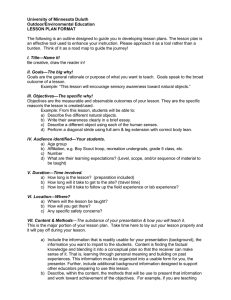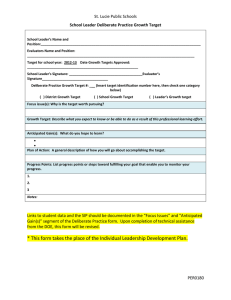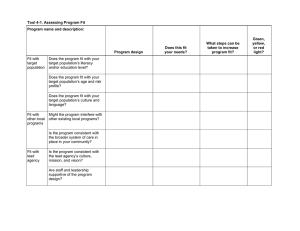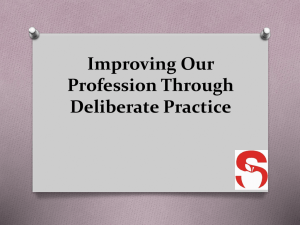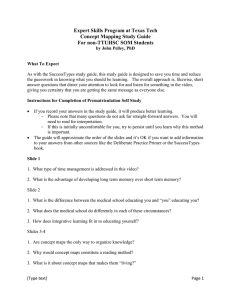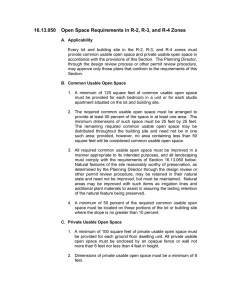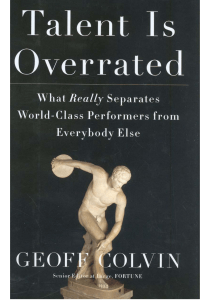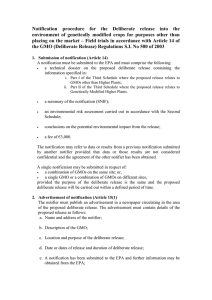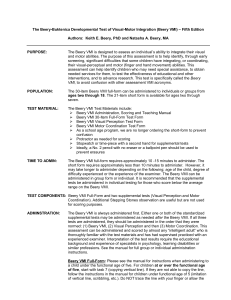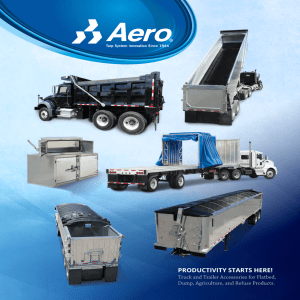Lesson Plan Format for Outdoor Education
advertisement
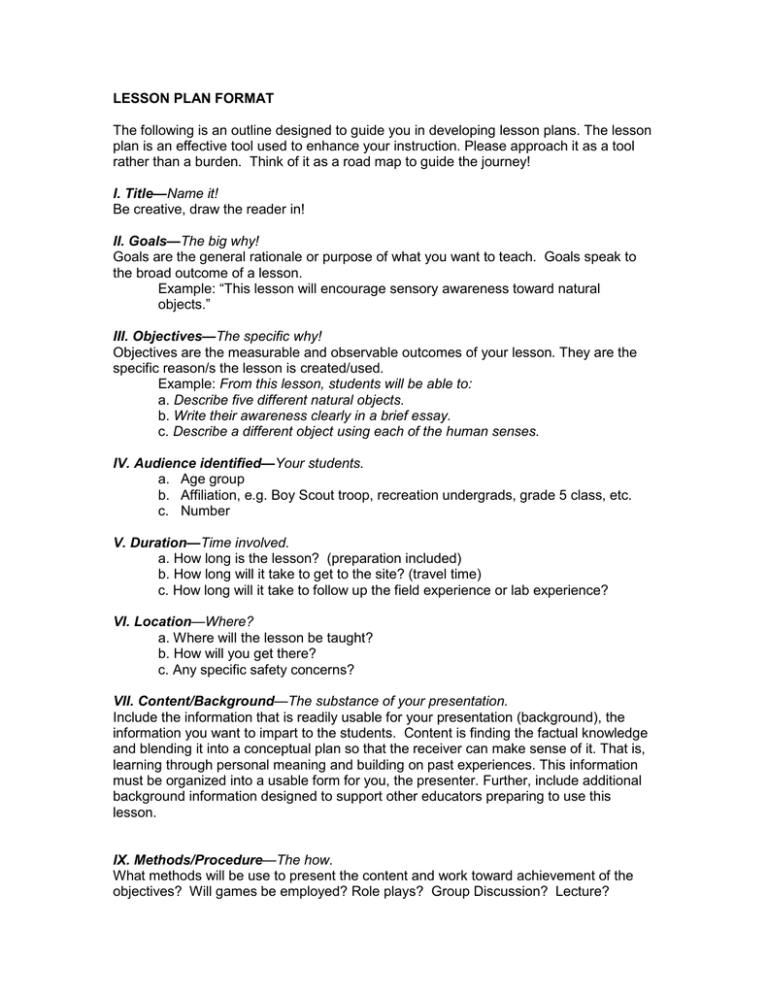
LESSON PLAN FORMAT The following is an outline designed to guide you in developing lesson plans. The lesson plan is an effective tool used to enhance your instruction. Please approach it as a tool rather than a burden. Think of it as a road map to guide the journey! I. Title—Name it! Be creative, draw the reader in! II. Goals—The big why! Goals are the general rationale or purpose of what you want to teach. Goals speak to the broad outcome of a lesson. Example: “This lesson will encourage sensory awareness toward natural objects.” III. Objectives—The specific why! Objectives are the measurable and observable outcomes of your lesson. They are the specific reason/s the lesson is created/used. Example: From this lesson, students will be able to: a. Describe five different natural objects. b. Write their awareness clearly in a brief essay. c. Describe a different object using each of the human senses. IV. Audience identified—Your students. a. Age group b. Affiliation, e.g. Boy Scout troop, recreation undergrads, grade 5 class, etc. c. Number V. Duration—Time involved. a. How long is the lesson? (preparation included) b. How long will it take to get to the site? (travel time) c. How long will it take to follow up the field experience or lab experience? VI. Location—Where? a. Where will the lesson be taught? b. How will you get there? c. Any specific safety concerns? VII. Content/Background—The substance of your presentation. Include the information that is readily usable for your presentation (background), the information you want to impart to the students. Content is finding the factual knowledge and blending it into a conceptual plan so that the receiver can make sense of it. That is, learning through personal meaning and building on past experiences. This information must be organized into a usable form for you, the presenter. Further, include additional background information designed to support other educators preparing to use this lesson. IX. Methods/Procedure—The how. What methods will be use to present the content and work toward achievement of the objectives? Will games be employed? Role plays? Group Discussion? Lecture? Demonstration? Experimentation? Observation? Provide specific directions of procedure to accomplish the planned lesson…Step 1, step 2…part a, part b…A peer educator should be able to pick up your lesson plan and follow your procedural steps to successfully present the lesson. X. Equipment—What you need! a. What equipment or materials will be needed? b. List each specific item and quantity. XI. What is a foul weather alternative? Remember, this is outdoor education so avoid simply going indoors. Think of how you can protect your students – such as string a tarp, provide a clothing list, change to a more protected learning site, etc. XII. Evaluation—Assessing learning. Provide a specific plan for assessing learning. The plan may be a test, a group discussion, a rubric, a product completed for the student portfolio, etc. Be deliberate about how the learning will be assessed, your tool should help you address the following questions: a. How do you know that the lesson was successful? b. Were your objectives met? c. How were you successful as an instructor? Avoid simply asking the students how they “liked” your lesson. Like/dislike does not measure learning. XIII. Follow up—What’s next? Each lesson should link to the next lesson of a deliberate sequence (scope and sequence). a. What is the next lesson? b. How will you prepare your students for the next lesson? XIV. Reference materials to support your lesson—support! a. Provide any source information (citations). b. List at least 3 references for additional information. Use APA (American Psychological Association – 5th Edition) format. Bates, Beery & Gilbertson 2002
